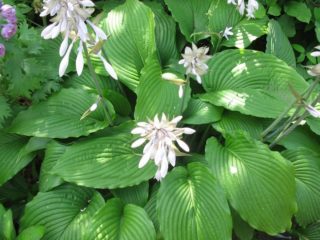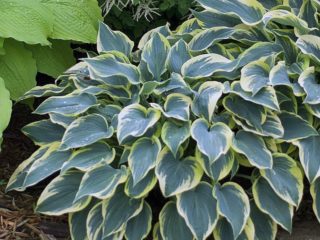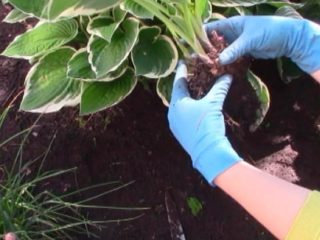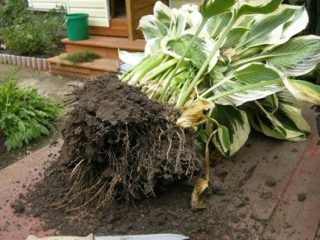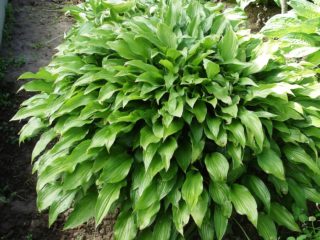Content
Hosta Praying Hands is one of the most spectacular plants that has taken its rightful place in modern garden design. Despite its apparent inconspicuousness in the overall composition, upon closer examination the host simply fascinates with its extraordinary beauty.
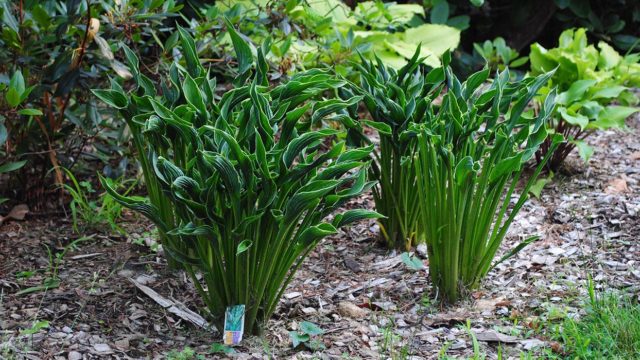
Hosta Praying Hands - a unique plant with an unusual leaf shape
A rare, unique plant in its own way, it is demanding on the planting site, but is completely unpretentious in further care. The perennial will decorate the garden and plot, greenhouse and living room.
Description of Hosta Praying Handles
Hosta Praying Hands (Praying Hands) belongs to the Liliaceae family, is a perennial, the homeland of which is considered to be the Far East, Japan and Southeast Asia. The plant first appeared in Europe in the 19th century; initially it was found very rarely, only in private collections.
Currently, Hosta Praying Hands is very popular due to its high decorativeness and unpretentiousness.
It got its name from the shape of its hard leaves with numerous veins located close to each other.Dark green narrow leaves with a creamy edge along the edges are directed upward and intricately twisted. They are shaped like hands facing the sky.
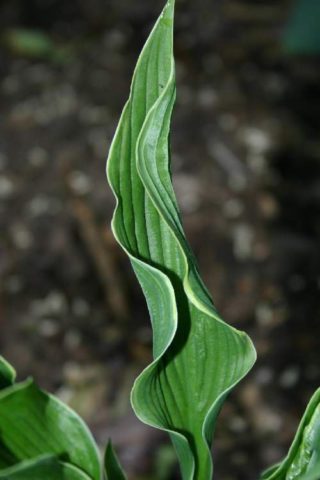
The leaves of the plant are hard, strongly curled, with a creamy narrow border along the edges
The leaves have a waxy coating. Hosta blooms in August. The flowers are narrow bells of light lavender color on long peduncles. With good care and the right planting site, the height of the plant can reach 50–60 cm. On average, the height of the hosta is 35–40 cm.
Hosta Praying Hands is a species of medium height - medium (M). The shape of the bush is vase-shaped, the diameter of the bush grows up to 76 cm. The plant can grow in one place for up to 20 years.
Praing Hands grows in semi-shaded areas. It can be planted in sunny areas, but at midday it is recommended to shade the plant. Of all the hostas, Praying Hands is the least demanding in terms of lighting. Winter-hardy, tolerates middle zone winters well without shelter.
It prefers slightly acidic soils, but planting in soil with an alkaline reaction is acceptable. Does not tolerate marshy soils. Responsive to intensive watering. The color of the leaves remains unchanged throughout the season.
Application in landscape design
The high decorative value of the Praying Hosta has led to the widespread use of the bush in landscape design compositions. Unpretentious in proximity to other plants.
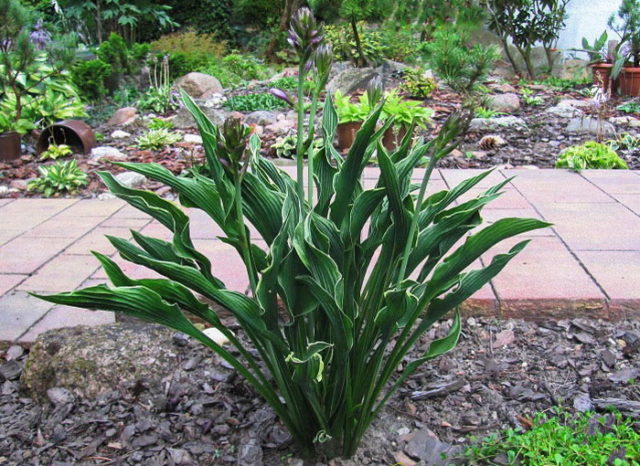
Placing the hosta in single plantings emphasizes its originality
Compared to other hostas, the Praying Hands hosta is lost, so it is better to plant it as a border decoration.Framing with stones and fancy driftwood will highlight the beauty and uniqueness of the herbaceous plant. A good hosta is planted around the perimeter of the blind area of the house, along the edges of a pond or garden path.
Reproduction methods
You can propagate the hosta yourself in several ways:
- dividing the bush;
- growing from seeds;
- cuttings
Another method of propagation is vegetative, but it is available in industrial conditions. Is the most effective.
Reproduction by dividing the bush is carried out in late spring or summer. The survival rate and growth rate of a young plant will depend on the size of the adult. The more magnificent the bush, the more fruitful the division.
Cutting means the separation of a single cutting from an adult plant with roots. The isolated material can be immediately planted in the ground.
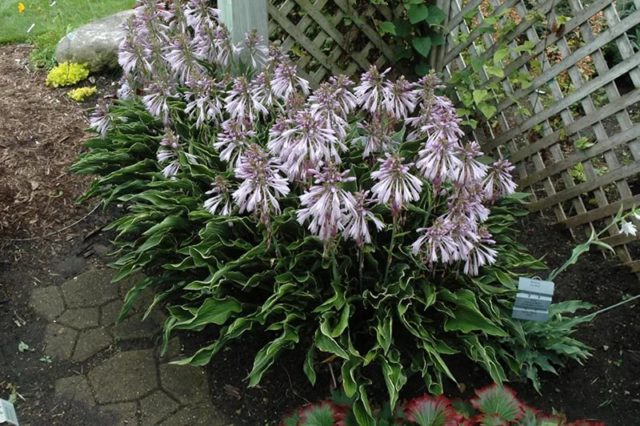
Hosta Praing Hands blooms in August, the flowers are narrow bells on long peduncles.
A more labor-intensive method of propagation is growing from seeds. Before planting, they should be kept in a cold place for a month and treated with growth stimulants. Germination rate is 70%.
Before planting, it is necessary to disinfect the container itself, seeds and soil. Potassium permanganate is suitable for these purposes. The container for planting can be treated with an alcohol-containing solution.
The bottom of the container must be filled with drainage. Then add a layer of light fertile soil. Seeds are planted in well-watered soil and the container is left under the film in a shaded place at a temperature of 18 to 25 degrees.Shoots appear after 2 - 3 weeks.
After germination, the container is placed in a well-lit place, but not in the sun. And after two leaves appear, the hosta is dived. A quarter of the volume of soil for sprouts should consist of sand. Single shoots grow under the film.
During the first week after diving, the film is periodically opened slightly to harden the plant. And after a week they remove the film. Seedlings can be taken outside at a time when the air temperature reaches a stable level of +18 degrees.
Landing algorithm
Planting material is selected paying attention to the number of buds and root characteristics:
- the seedling should have 2 – 3 buds;
- the root must be elastic and its length must be at least 12 cm.
Seedlings should be planted in the ground in early spring or late summer. If seedlings are purchased in advance, store them in a cool, dark place. The room temperature should not exceed +5 degrees.
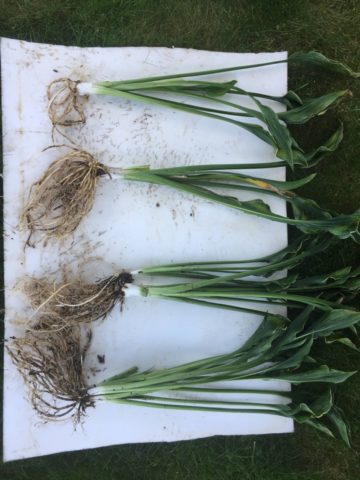
The root of the seedling must be elastic, light, and at least 12 cm long.
For planting, you should not choose places where the plant will be exposed to direct sun. This can change the color of the leaves, instead of the bright green of the Hosta Praying Hands taking on a faded color.
The best planting location is partial shade or well-lit areas that are not exposed to midday sun. Tolerates shaded areas well.
The seat is prepared as follows:
- Dig up the soil, adding humus or compost.
- Dig planting holes 30 cm deep, the distance between them is 120 cm.
- Spill water.
- The seedlings are planted so that the plant stems are above the soil.
- The root areas are mulched with crushed bark or peat.
- Watering and loosening the soil is done every 3 days.
Growing rules
Hosta Praying Hands is a moisture-loving plant. It is watered 2 times a week. In dry summers, the amount of watering is increased; the procedure is recommended in the first half of the day.
Praing Hands is responsive to loosening the soil. It is carried out regularly, preventing the appearance of a dense crust in the root zone. Since the hosta grows well in diameter, weeds rarely affect the growing areas.
Feeding is carried out three times per season. Fertilizers should not be applied more often to avoid burning the leaves. Nitrogen, phosphorus and potassium additives are used as fertilizing. They are introduced during the period of growth, flowering and after its end.
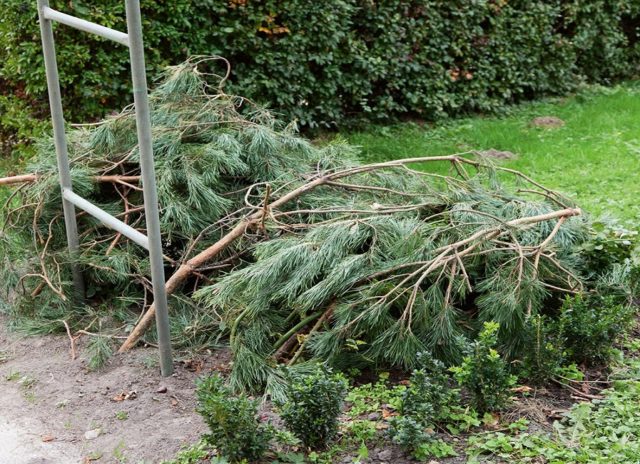
Cover the hosta for the winter if necessary, using coniferous branches
After flowering is completed, it is necessary to replace mineral fertilizers by adding humus or compost as a top dressing. This will allow the plant to reduce the growth of green mass, prepare for wintering, and make it easier to endure.
In the fall, after flowering is complete, the flower stalks are cut off so that the plant does not waste energy on ripening the seeds. There is no need to cut off leaves in the fall. This procedure is carried out in the spring.
Preparing for winter
Hosta Praying Hands tolerates wintering well in the middle zone. In regions with mild winters, it does not require shelter, except when it comes to a young plant planted in open ground at the end of summer.
In temperate climate zones, it is preferable to cover the hosta for the winter. Polyethylene film cannot be used as a covering material. It makes it difficult for the bush to breathe and promotes the proliferation of pests and diseases.
Before sheltering for the winter, the soil under the plant is loosened and mulched with peat, sawdust or dry grass. In the spring, the mulch is not removed; as it decomposes, the soil will receive additional fertilizing. Cover the hosta with spruce branches.
Diseases and pests
The host rarely gets sick. In some cases, gardeners notice the appearance of brown spots on the leaves. The phenomenon is caused by the development of phyllostictosis. With this disease, the bush is destroyed, and the soil under it is thoroughly disinfected.
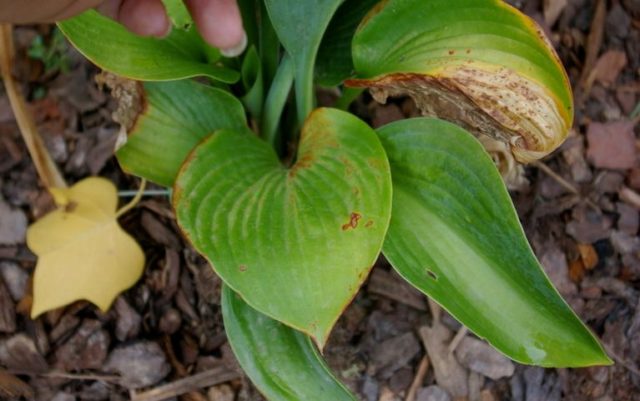
Brown spots on hosta leaves are a sign of phyllosticosis disease
Sometimes the hosta is affected by gray mold or sclerotinia. These diseases are treated with fungicides.
The hosta is attacked by slugs that like to feast on the leaves of the plant, leaving holes in them. To scare away the pest, crushed stone or broken shells are scattered around the bush. Insecticides are used to protect leaves.

Hosta Praying Hands looks great in a composition with stones and fancy driftwood
Conclusion
Hosta Praying Hands is a real find for gardeners. With minimal care, the plant pleases with its decorativeness and appearance. Hosta Praying Hands is unique and has an unusual leaf shape. It is a rare species, growing in one place for decades.
